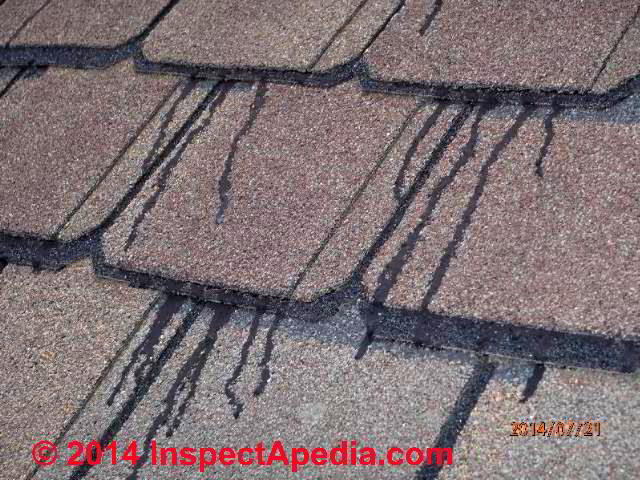When applying roofing tar make sure that you have at least a few consecutive days of sunshine without rain or snow so that the tar has time to cure.
Black tar on back on roof shingles.
The ideal temperature is 70 degrees f.
Simply slapping some tar on there instead of having a professional come out to assess could mean that you re leaving other damaged areas open to the elements as well.
While you can apply roofing tar at lower temperatures it will not properly set until it reaches 70 degrees.
If you have a simple leak in your roof and know exactly where it is then you can apply roofing tar over the affected area to create an effective patch.
Prevent shingle damage from wind uplift.
When to tar a roof.
The most common type is known as gloeocapsa magma also known as blue green algae.
The black streaks running down roofs are actually a hardy algae called gloeocapsa magma.
Roofing felt also known as tar paper serves as both an extra layer of protection between the shingles and the plywood and as a temporary moisture barrier until all the shingles are in place.
Roofing tar is a sticky black substance used to waterproof roofs before shingles are applied or used on flat roofs to improve their ability to resist water damage.
Laminated shingles require 4 spots of cement per shingle.
Each spot should be approximately the size of a quarter and placed 1 to 2 from each end of the tab and near the bottom.
The shiny black strips form the glue line on the shingle.
As the blue green algae accumulate they develop a dark hardened outer coating which results in the black stains you see.
The preferred method though is to either replace the shingles that are leaking by removing the damaged shingles and replacing them and the roofing felt underneath or by lifting the row of shingles just above the damaged point and adding new.
What is the purpose of the glue strip on asphalt roof shingles.
After application press the tab down firmly to start the bond.
Our photo left shows a typical 3 tab asphalt roof shingle this one is made by gaf.
Sometimes the tar accidentally gets on objects or fabrics and the longer it sits there the harder it dries often making it difficult or challenging to remove it.
Although these dark spots and ugly black streaks on your roof may look like dirt mildew soot or mold what they really are is algae.










